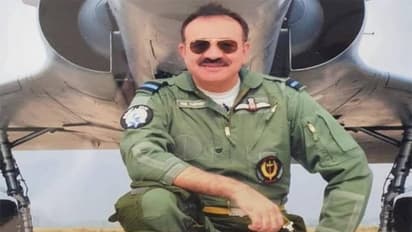India Untold: The Kashmiri pilot who flew India's first Rafale jet, shaped IAF's modern era

Synopsis
Air Vice Marshal Hilal Ahmed, a Kashmiri Muslim and the first Indian to fly the Rafale jet, played a key role in India’s air power evolution, significantly contributing to national defence preparedness and modernisation.
In the high-stakes world of military aviation, few figures stand out as clearly as Air Vice Marshal Hilal Ahmed. Hailing from Anantnag in Jammu and Kashmir, Hilal Ahmed has carved his name into Indian Air Force (IAF) history as the first Indian to fly the Rafale fighter jet — a symbol of India’s leap into next-generation air combat.
Hilal Ahmed’s journey from the picturesque yet conflict-prone valley of Kashmir to the cockpit of one of the world’s most advanced fighter aircrafts is not only inspiring but strategically significant. A Kashmiri Muslim with a career spanning decades in the IAF, Ahmed has flown more than 3,000 accident-free hours on multiple aircraft platforms, including the MiG-21, Mirage 2000, and eventually, the Rafale.
What sets Hilal Ahmed apart isn’t just his flying skills. His leadership and technical expertise played a critical role in operationalising the Rafale program for India. As the IAF’s Air Attaché in France during the crucial delivery phase of the Rafale deal, Ahmed was tasked with overseeing not just the transfer of aircraft, but also ensuring that they were equipped with India-specific enhancements — advanced radar systems, weapon capabilities, and electronic warfare suites.
It was under his supervision that the first batch of Rafale fighter jets was tested, armed, and readied for deployment. In fact, he was on board when the first jets took off from France and landed in India in 2020, marking a major milestone in Indian defence history. His contributions helped integrate the Rafale smoothly into IAF’s fleet, boosting India's air superiority amid growing regional tensions.
Though Air Vice Marshal Ahmed is not officially linked to the combat details of the recent Operation Sindoor — a cross-border precision strike mission in retaliation for the April 2025 Pahalgam terror attack — his role in the broader military ecosystem is undeniable. The Rafale jets, now a central pillar of India’s air strike capability, were heavily used during the operation, reportedly targeting terror camps and high-value infrastructure across Pakistan and Pakistan-occupied Kashmir.
Operation Sindoor demonstrated India’s ability to conduct complex, multi-agency, coordinated strikes using high-precision weapons and advanced fighter jets. It also underscored the importance of seasoned military leaders like Hilal Ahmed, whose work behind the scenes helped shape the preparedness that made such missions possible.
What makes Ahmed’s story remarkable is not just his service record, but his identity — a Kashmiri Muslim officer rising through the ranks at a time when Kashmir often makes headlines for reasons far removed from honour or achievement. In Ahmed’s case, his professional excellence and quiet service reflect the silent contribution of countless soldiers and officers from all regions and communities, united by duty.
Today, as India faces complex threats — from state-sponsored terrorism to high-tech warfare — the Indian Air Force stands better equipped than ever, thanks in part to the vision and dedication of officers like Hilal Ahmed. His legacy is not just in the Rafale’s flight path, but in the confidence it gives a nation defending its skies.
Stay updated with the Breaking News Today and Latest News from across India and around the world. Get real-time updates, in-depth analysis, and comprehensive coverage of India News, World News, Indian Defence News, Kerala News, and Karnataka News. From politics to current affairs, follow every major story as it unfolds. IMD cities' weather forecastsRain Cyclone Asianet News Official App